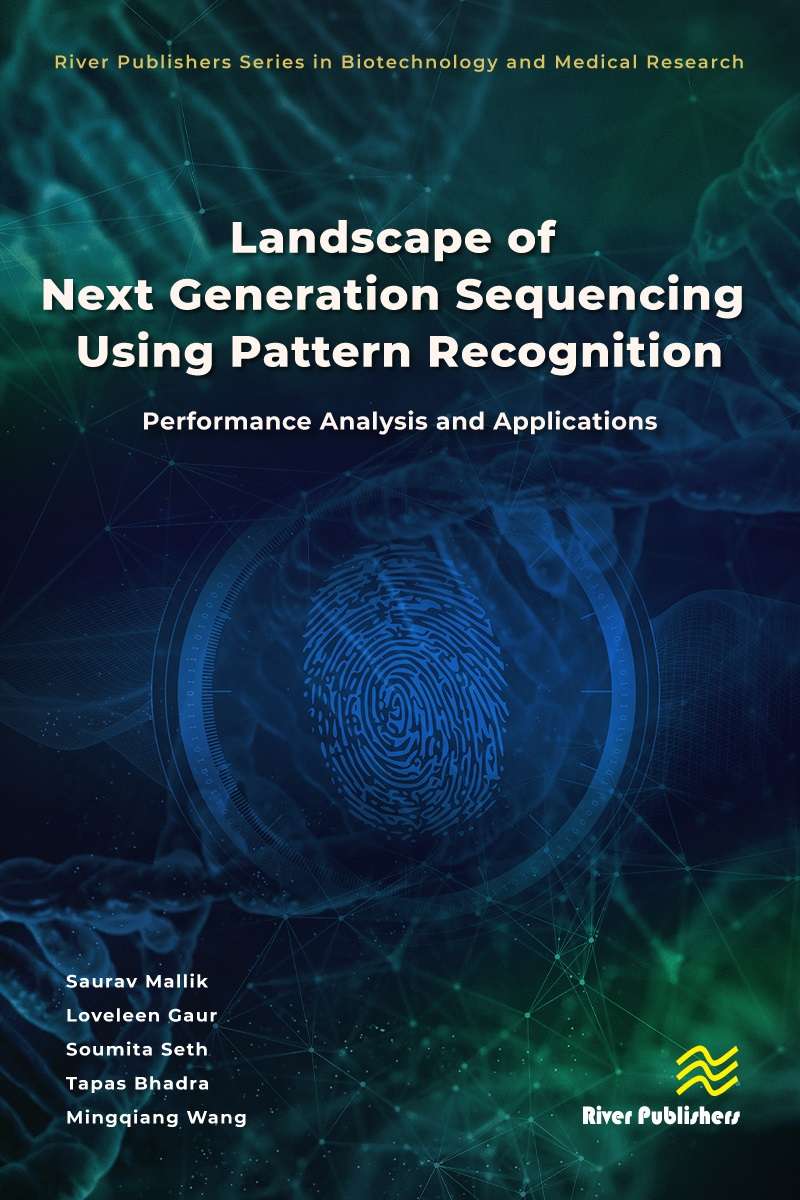
Landscape of Next Generation Sequencing Using Pattern Recognition
Performance Analysis and Applications
Biotechnology and Medical Research
Landscape of Next Generation Sequencing Using Pattern Recognition
Performance Analysis and Applications
Authors:
Saurav Mallik, The University of Arizona, USA
Loveleen Gaur, Amity University, India
Soumita Seth, Future Institute of Engineering and Management, Kolkata, India
Tapas Bhadra, Aliah University, Kolkata, India
Mingqiang Wang, Stanford Cardiovascular Institute, School of Medicine, Stanford University, USA
ISBN: 9788770041515 e-ISBN: 9788770041218
Available: October 2024
This book focuses on an eminent technology called next generation sequencing (NGS) which has entirely changed the procedure of examining organisms and will have a great impact on biomedical research and disease diagnosis. Numerous computational challenges have been brought on by the rapid advancement of large-scale next-generation sequencing (NGS) technologies and their application. The term "biomedical imaging" refers to the use of a variety of imaging techniques (such as X-rays, CT scans, MRIs, ultrasounds, etc.) to get images of the interior organs of a human being for potential diagnostic, treatment planning, follow-up, and surgical purposes. In these circumstances, deep learning, a new learning method that uses multi-layered artificial neural networks (ANNs) for unsupervised, supervised, and semi-supervised learning, has attracted a lot of interest for applications to NGS and imaging, even when both of these data are used for the same group of patients.
The three main research phenomena in biomedical research are disease classification, feature dimension reduction, and heterogeneity. AI approaches are used by clinical researchers to efficiently analyse extremely complicated biomedical datasets (e.g., multi-omic datasets. With the use of NGS data and biomedical imaging of various human organs, researchers may predict diseases using a variety of deep learning models. Unparalleled prospects to improve the work of radiologists, clinicians, and biomedical researchers, speed up disease detection and diagnosis, reduce treatment costs, and improve public health are presented by using deep learning models in disease prediction using NGS and biomedical imaging. This book influences a variety of critical disease data and medical images.
The three main research phenomena in biomedical research are disease classification, feature dimension reduction, and heterogeneity. AI approaches are used by clinical researchers to efficiently analyse extremely complicated biomedical datasets (e.g., multi-omic datasets. With the use of NGS data and biomedical imaging of various human organs, researchers may predict diseases using a variety of deep learning models. Unparalleled prospects to improve the work of radiologists, clinicians, and biomedical researchers, speed up disease detection and diagnosis, reduce treatment costs, and improve public health are presented by using deep learning models in disease prediction using NGS and biomedical imaging. This book influences a variety of critical disease data and medical images.
Next generation sequencing, next-generation sequencing-based omics, pattern recognition, feature extraction and representation, biomedical imaging, biomarkers discovery, DNA methylation, linear regression, RNA sequencing, differentially expressed genes detection, disease classification, deep learning classifiers, multi-objective optimization, association rule mining, directional signature classification, dimensionality reduction, clustering, single-cell RNA-seq data, discriminant features detection, classification of essential genes, rare disease stage detection.
1. Introduction: Fundamentals of Next Generation Sequencing, Pattern Recognition, Biomedical Images
2. Integrating DNA Methylation, Linear Regression and Machines Learning on RNA-seq Data
3. Multi-objective Optimization-based Association Rule Mining Integral Approach for Optimal Ranking and Directional Signature Classification of Multi-omic Data
4. Dimensionality Reduction, Clustering and Biomarkers Discovery on Single-cell RNA-seq Data
5. Application of Detecting Discriminant Features from Stationary Nucleotide Base Pattern to the Classification of Essential Genes
6. Integrating Deep Learning and Next Generation Medical Image Data for Rare Disease Stage Detection
7. Conclusions and Scope for Further Research
2. Integrating DNA Methylation, Linear Regression and Machines Learning on RNA-seq Data
3. Multi-objective Optimization-based Association Rule Mining Integral Approach for Optimal Ranking and Directional Signature Classification of Multi-omic Data
4. Dimensionality Reduction, Clustering and Biomarkers Discovery on Single-cell RNA-seq Data
5. Application of Detecting Discriminant Features from Stationary Nucleotide Base Pattern to the Classification of Essential Genes
6. Integrating Deep Learning and Next Generation Medical Image Data for Rare Disease Stage Detection
7. Conclusions and Scope for Further Research